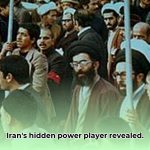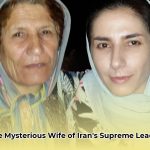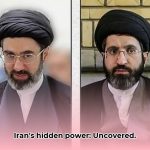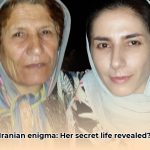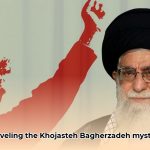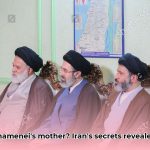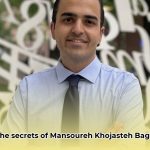Who is Mansoureh Khojasteh Bagherzadeh, the wife of Iran’s Supreme Leader, Ali Khamenei? This question is surprisingly difficult to answer, underscoring the challenges of uncovering such a story. She is one of the most private figures in a nation known for its guarded secrets. We know she was born in Mashhad, married Ali Khamenei, and hails from a religious family. Beyond these fundamental details, information is scarce. This isn’t simply a case of a quiet life; it’s a carefully maintained veil of secrecy. For more information, see her biography. This article delves into the limited available information, explores the reasons behind this secrecy, and examines what this silence reveals about power and politics in Iran. We will explore the difficulties in uncovering her story and glean insights from the available – and unavailable – information.
The Life of Mansoureh Khojasteh Bagherzadeh: A Study in Contrasts
The life of Mansoureh Khojasteh Bagherzadeh, wife of Iran’s Supreme Leader, Ali Khamenei, is shrouded in an intentional lack of transparency. While her husband’s influence resonates globally, her life remains largely obscure – a fascinating contrast that invites exploration. This article delves into the enigma surrounding this prominent couple, acknowledging the difficulties in obtaining comprehensive details.
Fragmented Facts: Piecing Together the Known Information
We possess a few confirmed details, the fundamental components for understanding her life. She was born in Mashhad, a city in northeastern Iran revered for its religious significance. Her father, Mohammad Esmaeil Khojasteh Bagherzadeh, was a businessman. She married Ali Khamenei, with the ceremony officiated by Ayatollah Mohammad Hadi Milani, sometime between 1964 and 1965. The couple has six children: Mostafa, Mojtaba, Masoud, Meysam, Boshra, and Hoda. Mostafa is primarily involved in seminary studies and is married to the daughter of Azizollah Khoshvaght. Mojtaba, a more prominent figure in Iranian media and politics, is married to the daughter of Gholam Ali Haddad Adel. Masoud is married to the daughter of Seyyed Mohsen Kharazi, establishing a family connection with Kamal and Sadegh Kharazi. Meysam is married to the daughter of Mahmoud Lolachian, a religious bazaar merchant in Tehran. Like Seyyed Masoud, he is involved with the office responsible for preserving and publishing the works of “the Leader of the Revolution.” Boshra is married to the son of Mohammad Mohammadi Golpayegani. Hoda is married to the son of Mohammad-Bagher Bagheri. Even these basic facts are subject to slight variations across sources, highlighting the challenges of confirming concrete details about a life largely kept outside the public eye.
The Walls of Silence: Exploring Motivations for Secrecy
Beyond these fragments of information, a significant void persists. Why is so little known about Mansoureh Khojasteh Bagherzadeh’s life? Is it merely a lack of public interest, or does a more deliberate reason exist? Some believe it is a calculated strategy, a conscious decision to maintain privacy and tightly control the narrative surrounding the Khamenei family. Others suggest the limited information is a consequence of Iran’s stringent control over information flow. This deliberate absence of information is itself a compelling narrative, reflecting the opaque nature of power within the country and the meticulous management of that power, thus highlighting Iran’s complex political landscape. It paints a clear picture of the deep-seated secrecy surrounding the inner workings of the Iranian leadership. What does this silence truly signify about the dynamics of power and influence within Iranian society?
Investigative Challenges: A Journalist’s Perspective
Uncovering verifiable facts about Mansoureh and her life presents significant challenges for investigative journalists, showcasing inherent research limitations. Standard journalistic practices—accessing official records, interviewing family members and close associates—prove exceptionally difficult, if not impossible. Attempts to obtain information encounter roadblocks, underscoring the difficulties in reporting on this subject, especially when focused on politically sensitive individuals. We are left with the formidable task of piecing together fragmented information, leaving many questions unanswered. Any information obtained requires careful evaluation and verification.
Fact vs. Fiction: Navigating the Murky Waters
Numerous sources present details about her life, her background, and her activities, but verifying the accuracy of these reports is incredibly challenging, requiring meticulous source evaluation. Discrepancies often arise regarding her birth date (some sources claim April 4, 1945, while others state 1947), educational background (details of formal education are not publicly available, though some claim she studied Persian literature), and even her physical appearance (height and weight estimates vary across sources). Allegations of humanitarian work are difficult to independently verify. A skeptical and critical approach is essential. We must carefully distinguish between confirmed facts and speculation. The limited information available should be treated with caution.
A Portrait in Shadow: Unveiling Power Dynamics Through Absence
Even without comprehensive details, the lack of information is revealing, suggesting a carefully cultivated public image. It intimates a purposeful strategy of secrecy and the complex dynamics of power within a deeply conservative political system. It paints a picture of a woman who has either chosen—or been compelled—to maintain a low profile and remain outside the public spotlight. Paradoxically, this absence of information reveals as much, perhaps even more, than any readily available information, highlighting the power of omission and underscoring the limitations of our knowledge against the backdrop of controlled secrecy.
The Ongoing Inquiry: Future Research
To enhance our understanding of Mansoureh Khojasteh Bagherzadeh’s life, innovative investigative approaches are essential, requiring relentless research. Researchers may need to explore Iranian archives for any references to her, however small. Journalists might consider indirect strategies to approach individuals who may possess knowledge of her life, always prioritizing ethical considerations. Even the smallest confirmed detail could help flesh out the sparse puzzle of her life. This continuous investigation seeks not only to uncover every detail but also to understand the systems and forces that have shaped, and continue to shape, her life. The investigation is a continuous process, and our understanding may evolve as further research comes to light.
Verifying Conflicting Information About Mansoureh Khojasteh Bagherzadeh: A Methodical Approach
Key Takeaways:
- Information about Mansoureh Khojasteh Bagherzadeh is deliberately obscured, making verification challenging.
- Discrepancies exist across sources regarding key biographical details.
- Verifying information demands meticulous research and cross-referencing.
- The lack of readily available information is, itself, a significant finding.
- Understanding the Iranian information ecosystem is crucial for effective research.
The Enigmatic First Lady: A Study in Shadows
Mansoureh Khojasteh Bagherzadeh, wife of Iran’s Supreme Leader, Ali Khamenei, remains a largely unknown figure. Her shadowy presence and the secrecy surrounding her life raise questions about the role of women in Iranian society. This deliberate opacity makes verifying conflicting information about Mansoureh Khojasteh Bagherzadeh a formidable task. The available information paints a picture of a devout woman involved in charitable activities who steadfastly supports her husband’s political career. However, even these seemingly basic facts are not free from uncertainty. Reported birth dates vary, the extent of her education remains unclear, and even the number of her children is subject to debate. Why is her personal life so tightly guarded? What does this secrecy reveal about her, her family, and the Iranian political system?
Navigating the Information Labyrinth: A Methodical Approach
The scarcity of reliable information dictates our research approach, underscoring the need for rigorous investigation and the recognition that the absence of data is a significant piece of the puzzle itself. This is not a failure of research but a reflection of the tightly controlled information environment within Iran. Understanding the country’s unique political landscape is critical for any investigation.
To address the challenges of verifying conflicting information about Mansoureh Khojasteh Bagherzadeh, a meticulous methodology is essential:
- Triangulation of Sources: Rely on multiple, independent sources rather than accepting single accounts without scrutiny. Critically evaluate the potential biases of each source, weighing their credibility and assessing for potential propaganda.
- Primary Source Pursuit: Actively seek original documents – birth certificates, marriage certificate, academic records, or even personal accounts, if accessible. This is the most challenging aspect, given the subject’s private life and the Iranian political context.
- Contextual Analysis: Understand the political and cultural environment in which this information exists, considering cultural nuances. Iran’s strict information controls and the unique role of women in its political system significantly influence the accessibility of data.
- Fact-Checking and Cross-Referencing: Compare information across all available sources, meticulously noting inconsistencies. Document these discrepancies carefully, explaining the challenges of confirming or refuting them, and maintaining transparency throughout the process.
- Expert Consultation: Consult with experts on Iranian politics, culture, and history to gain insights into the context surrounding the subject’s life and to better assess the credibility of available information.
- Transparency and Disclosure: Clearly distinguish between corroborated facts and speculation based on contextual clues. Any conclusions drawn from insufficient evidence must be clearly labeled as inference or educated guesswork.
Unanswered Questions and Their Significance in Iranian Society
Despite rigorous research, many questions remain unanswered, highlighting the limitations of current information access. Discrepancies in reported birth years, educational background, and family size illustrate the difficulty of obtaining reliable information. This lack of information is a
- Unveiling the Enigma: Mansoureh Khojasteh Bagherzadeh’s Public Appearances & Private Life in Iran - July 18, 2025
- Unveiling the Mystery: Mansoureh Khojasteh Bagherzadeh’s Husband: A Rare Glimpse into a Private Life - July 18, 2025
- Unveiling Masoud Khamenei’s Mother: Power, Influence, and Iran’s Future - July 18, 2025


